Regulation of Th2 responses by different cell types expressing the interleukin-31 receptor
- PMID: 28428802
- PMCID: PMC5392993
- DOI: 10.1186/s13223-017-0194-9
Regulation of Th2 responses by different cell types expressing the interleukin-31 receptor
Abstract
Background: Interleukin-31 (IL-31) is a recently identified cytokine produced by Th2 cells that is involved in the development of atopic dermatitis-induced skin inflammation and pruritus. Its receptor, IL-31RA, is expressed by a number of cell types, including epithelial cells, eosinophils, and activated monocytes and macrophages. To date, however, the regulation of Th2 responses by distinct cell types and tissues expressing IL-31RA has not been well studied.
Methods: In this study, Cry j 2, one of the major allergens of Japanese cedar pollen, was administered to IL-31RA-deficient or wild-type (WT) mice via nasal or intraperitoneal injection for induction of specific Th2 responses.
Results: After nasal administration of Cry j 2, IL-31RA-deficient mice showed lower Cry j 2-specific CD4+ T cell proliferation, Th2 cytokine (IL-5 and IL-13) production, and Th2-mediated (IgE, IgG1, and IgG2b) antibody responses than WT mice. In contrast, IL-31RA-deficient mice administered Cry j 2 intraperitoneally showed stronger Th2 immune responses than WT mice.
Conclusions: These results indicate that IL-31R signaling positively regulates Th2 responses induced by nasal administration of Cry j 2, but negatively regulates these responses when Cry j 2 is administered intraperitoneally. Collectively, these data indicate that the induction of antigen-specific Th2 immune responses might depend on tissue-specific cell types expressing IL-31RA.
Keywords: Cry j 2; Deficient mice; IL-31 receptor; IgE; Th2.
Figures
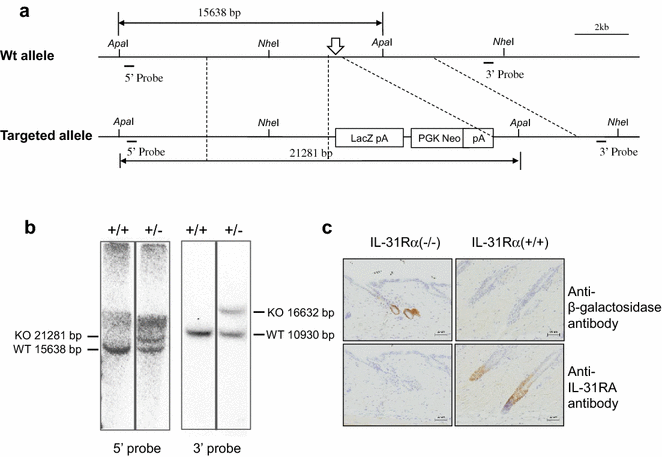
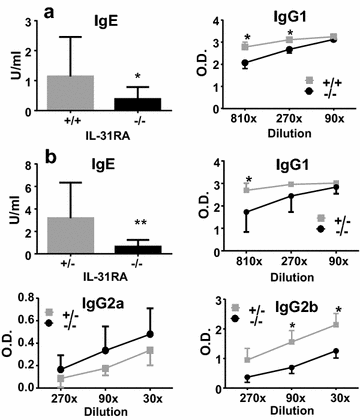
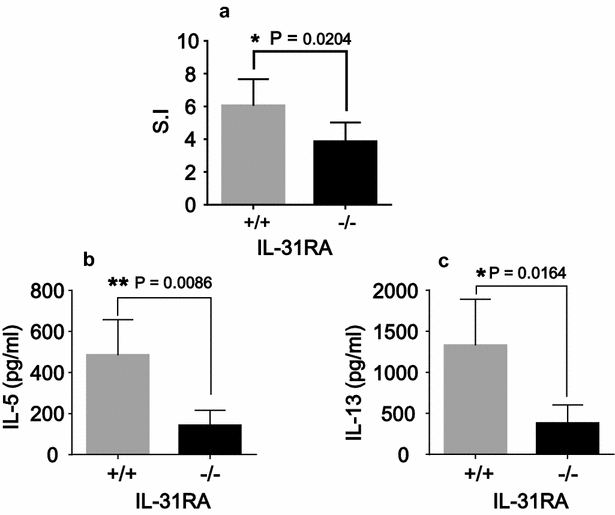
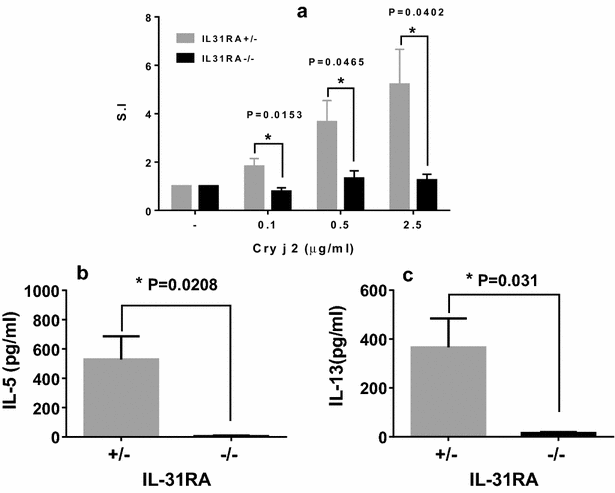
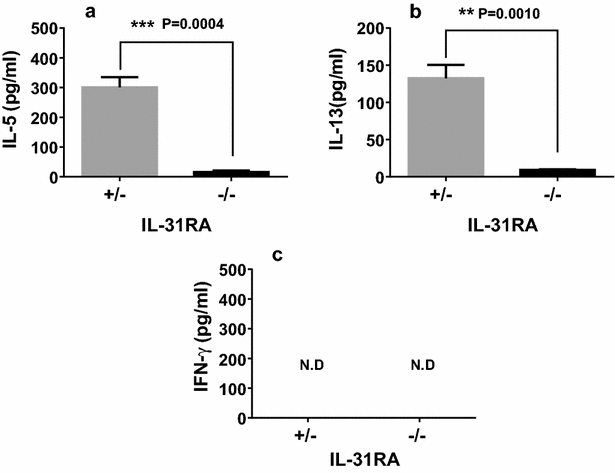
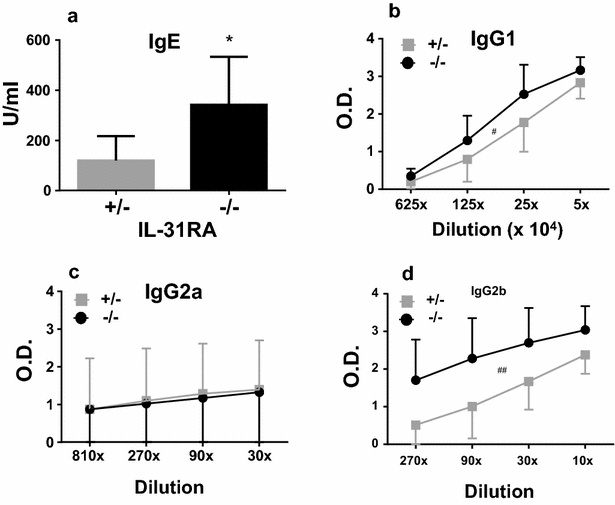
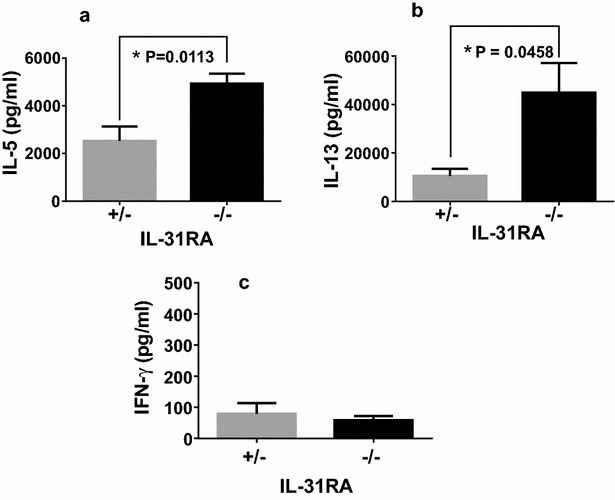
Similar articles
-
Oral administration of a dominant T-cell determinant peptide inhibits allergen-specific TH1 and TH2 cell responses in Cry j 2-primed mice.J Allergy Clin Immunol. 1998 Dec;102(6 Pt 1):961-7. doi: 10.1016/s0091-6749(98)70334-3. J Allergy Clin Immunol. 1998. PMID: 9847437
-
Th1/Th2 response profiles to the major allergens Cry j 1 and Cry j 2 of Japanese cedar pollen.Allergy. 1996 Oct;51(10):732-40. doi: 10.1111/j.1398-9995.1996.tb02118.x. Allergy. 1996. PMID: 8905002
-
Effect of Cry-consensus peptide, a novel recombinant peptide for immunotherapy of Japanese cedar pollinosis, on an experimental allergic rhinitis model in B10.S mice.Allergol Int. 2007 Dec;56(4):465-72. doi: 10.2332/allergolint.O-07-495. Epub 2007 Nov 1. Allergol Int. 2007. PMID: 17965586
-
Interleukin-31 and interleukin-31 receptor: New therapeutic targets for atopic dermatitis.Exp Dermatol. 2018 Apr;27(4):327-331. doi: 10.1111/exd.13533. Exp Dermatol. 2018. PMID: 29524262 Review.
-
Interleukin-31 and Pruritic Skin.J Clin Med. 2021 Apr 28;10(9):1906. doi: 10.3390/jcm10091906. J Clin Med. 2021. PMID: 33924978 Free PMC article. Review.
Cited by
-
Interleukin-31 Receptor A Expression in the Dorsal Root Ganglion of Mice with Atopic Dermatitis.Int J Mol Sci. 2023 Jan 5;24(2):1047. doi: 10.3390/ijms24021047. Int J Mol Sci. 2023. PMID: 36674561 Free PMC article.
-
Comparative Transcriptomics of IBD Patients Indicates Induction of Type 2 Immunity Irrespective of the Disease Ideotype.Front Med (Lausanne). 2021 May 31;8:664045. doi: 10.3389/fmed.2021.664045. eCollection 2021. Front Med (Lausanne). 2021. PMID: 34136502 Free PMC article.
-
Analyzing the Antinociceptive Effect of Interleukin-31 in Mice.Int J Mol Sci. 2023 Jul 17;24(14):11563. doi: 10.3390/ijms241411563. Int J Mol Sci. 2023. PMID: 37511321 Free PMC article.
-
IL-31: State of the Art for an Inflammation-Oriented Interleukin.Int J Mol Sci. 2022 Jun 10;23(12):6507. doi: 10.3390/ijms23126507. Int J Mol Sci. 2022. PMID: 35742951 Free PMC article. Review.
-
Genetic association of IL2RA, IL17RA, IL23R, and IL31RA single nucleotide polymorphisms with alopecia areata.Saudi J Biol Sci. 2022 Nov;29(11):103460. doi: 10.1016/j.sjbs.2022.103460. Epub 2022 Sep 27. Saudi J Biol Sci. 2022. PMID: 36248775 Free PMC article.
References
LinkOut - more resources
Full Text Sources
Other Literature Sources
Molecular Biology Databases
Research Materials

